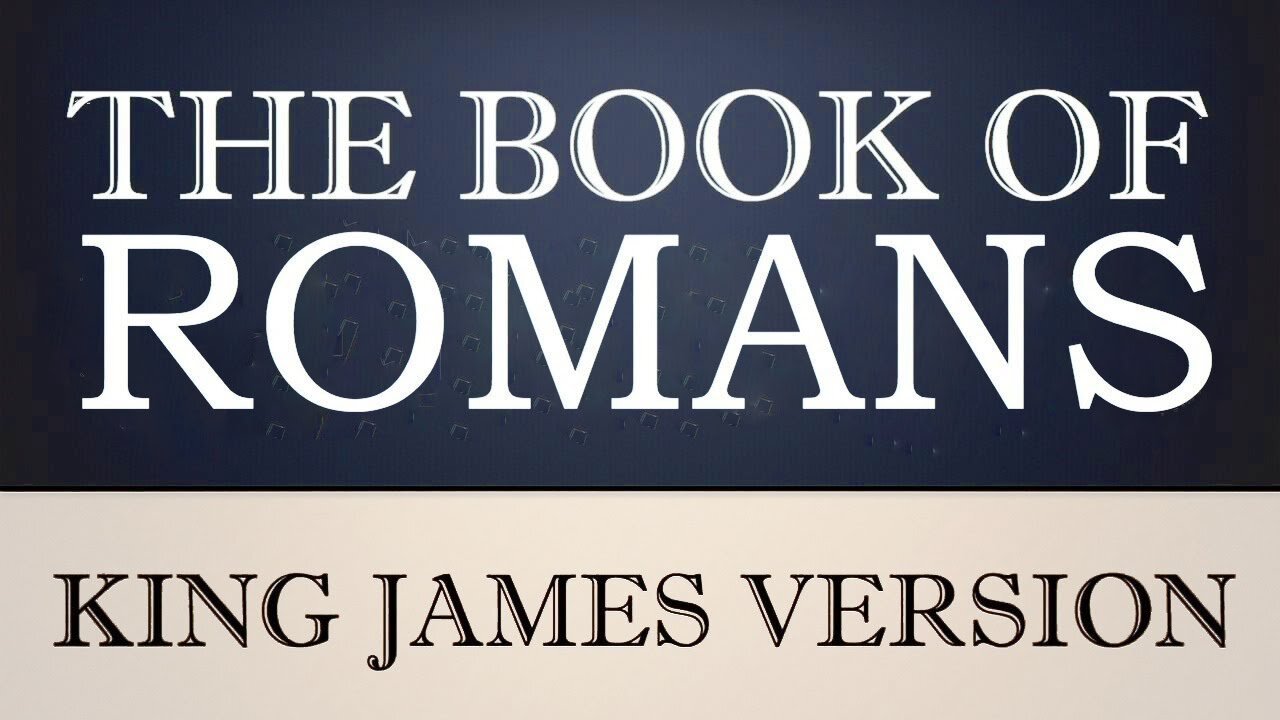Premium Only Content

45) The Book of Romans
ROMANS is the first and foremost of the letters of Paul. The epistle forms a sure foundation for the born again Christian. The theme of the epistle is the gospel of the Lord Jesus Christ Rom. 1:16). The key word of the letter is righteousness. The righteousness of God is the Lord Jesus Christ & is the prerequisite for eternal life in heaven. The self-righteousness of man is the basis for all the religions of the world (Rom. 10:1-4).
The letter begins with the sinfulness of mankind. All men are guilty before the Lord God and deserve the fiery judgment of God (Rom. 3:19), but the righteousness of God is offered freely by grace through faith in the Lord Jesus Imputed righteousness & justification are bestowed to the believer at the moment of salvation (Rom. 4:5; 5:1; Eph. 1:13-14). Romans contains 16 chapters and 433 verses.
Paul wrote of the blindness of the nation of Israel and the conversion of the Gentiles in chapters 9-11; however, the national blindness of Israel is not permanent because the Epistle to the Hebrews records the amended doctrines for the Jews during the Tribulation.
AN OVERVIEW OF THE LETTERS OF PAUL
As the LORD chose Abraham, a non-Jew, to be the father of the Jews, so God chose Paul, a non-Gentile, to be the Apostle to the Gentiles (Rom. 11:13; 15:16; Gal. 2:7; Eph. 3:1-8). God revealed to Moses the laws for the nation of Israel on Mt. Sinai and it appears God revealed the doctrines for born again believers to Paul on Mt. Sinai (Gal. 1:17). These doctrines were kept secret until they were first revealed to Paul (Rom. 16:25-27; Eph. 3:1-8).
The Epistles of Paul are the preserved letters that were written to seven churches and three men (Acts 23:33-34). The chronological order of these letters provide a pattern for the growth of the believer (1 Cor. 3:1; Eph. 5:1;
1 Tim. 1:2; 4:12; 2 Tim. 2:2; Philemon 9).
There are few Christians who become students, soldiers, and servants of Christ. In Christianity many young die on the vine through deception. In Christianity & in sports few attain the prize of a champion.
Each letter mark the steps of growth for the NT Christian. Romans reveals the foundation truth of justification by grace through faith in the shed blood of the Lord Jesus Christ.
The new birth of the believer begins a new life through the power of the regeneration of the Holy Ghost. The next letter to follow Romans is written to baby or carnal Christians. A newborn babe in Christ innocently proclaims his new faith in Christ. The joy and peace of the forgiveness of sins, the promise of eternal life in heaven, and the love for the Saviour compel the new creature to witness for Jesus Christ. A new believer often reaps some firstfruits and are encouraged.
The firstfruits cause the new convert to entertain thoughts of the ministry. The theme of the next book is the ministry, but the ministry is portrayed by corruption, persecution, reproaches, suffering, and trouble. The ministry is a sacrificial call to service. As the believer continues to grow he notices the apathy amongst the church; therefore, he questions the salvation of the apathetic Christian. He is tempted to develop a checklist in order to prove salvation.
Galatians is preserved to combat the error of using outward circumstances and convictions in order to determine the inner workings of the Spirit (John 3:8; Gal. 5: 16-26). The theme of Galatians is a believer is not only justified by grace through faith, but the believer is also sanctified by grace through faith. A believer can commit heinous sins as the lost & still be saved, but he forfeits inheritances for the kingdom (Rom. 8:17; Col. 3:23-24; 2 Tim. 2: 12; 2 Peter 2:6-8).
Ephesians provides a detailed study of the salvation of the believer and the proper method of growth and service through the fullness of the Holy Ghost and the word of God (Eph. 5:18; Col. 3:16). The by-products of love for God and His word are joy and peace (Rom. 14:17). Joy is the theme of Philippians and it is the outward characteristic that sinners observe most in the believer, The joyous Christian is warned in Colossians to beware of philosophy, tradition, and vain deceit in the Laodicean age.
The 2 letters to the Thessalonians provide the fundamentals of the faith for a model walk and work of the believer. An holy life is necessary to walk with the holy God and the truth of the Second Coming of Christ aids greatly in that walk (1 John 3:1-3). The letters to Timothy instruct the soldiers and students of Christ in the leadership of the church, The major orders are to take heed to thyself and to thy doctrine (1 Tim. 4:16; 5:17; 2 Tim. 2:15; 3:15-17). Titus is like a field manual for the soldier on the battlefield.
Philemon is the last letter of doctrinal issues for the NT believer. It reveals the highest calling for any saint as true servants of Christ. They fulfill the will of his Master (Rom. 8:28; 12; Phil. 1; col. 4:1-6; 1 Thess. 5:18; Philemon 1-9).
-
 LIVE
LIVE
GritsGG
7 hours agoQuads Win Streak! Top 70! Most Wins in WORLD! 3744+!
133 watching -
 13:26
13:26
Cash Jordan
1 day ago“PORTLAND MOB” Storms ICE HQ… ‘COMBAT’ Troops Respond With EXTREME FORCE
67.3K199 -
 4:32:52
4:32:52
ttvglamourx
7 hours ago $3.49 earnedFINSIHING YEAR 1 ON STARDEW !DISCORD
12.9K -
 3:49:46
3:49:46
Tommy's Podcast
5 hours agoE828: Vortex
11.8K -
 4:51:46
4:51:46
BubbaSZN
7 hours ago🔴 LIVE - BEATING DYING LIGHT: THE BEAST
11.2K -
 DVR
DVR
Major League Fishing
9 days agoLIVE! - Fishing Clash Team Series: Patriot Cup - Day 4
51.6K -
 1:31:04
1:31:04
Rebel News
1 day agoTommy Robinson & Avi Yemini Banned from Al-Aqsa mosque!
12.2K31 -
 2:18:29
2:18:29
XxXAztecwarrior
3 hours agoPrinting money on Delta
5.71K -
 2:04:59
2:04:59
LFA TV
1 day agoTHE RUMBLE RUNDOWN LIVE @9AM EST
58.7K21 -
 10:02:37
10:02:37
Plan ₿ Forum
1 day agoWAGMI Stage – Lugano Plan ₿ Forum 2025 | Live from Lugano 🇨🇭
524K22